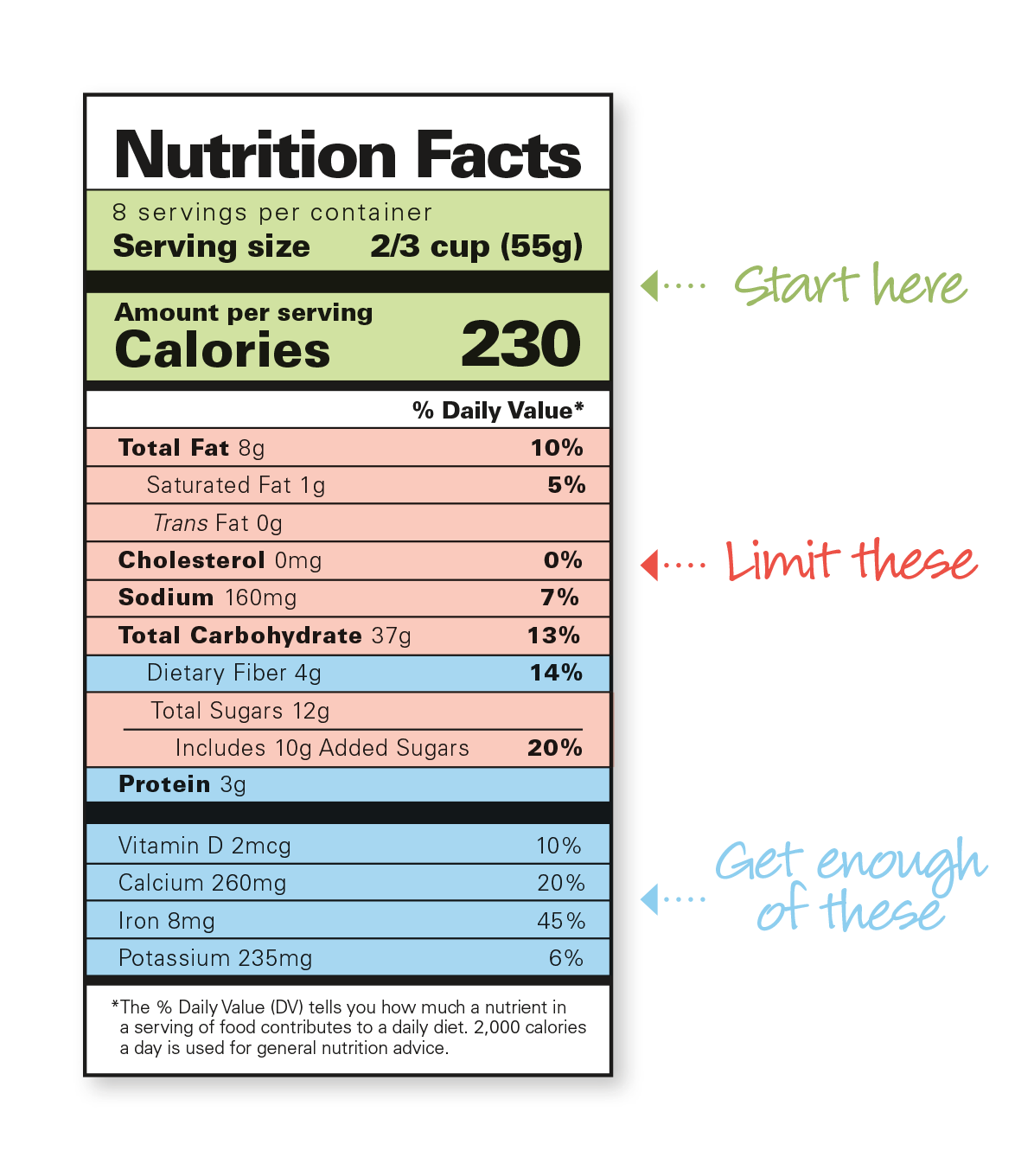Have you ever wondered what your favorite prepackaged snacks are made of? Take a peek at the Nutrition Facts label on the box, bottle or bag housing your goods.
There you will find the serving size, calories and daily values of sugars, fats, vitamins and minerals in an easy-to-read format recently updated by the U.S. Food and Drug Administration (FDA).
But how do you read the label correctly, and what do the numbers mean for you and your nutrition?
Reading a Nutrition Facts label

- Start with the serving size
First, check out the serving information, so you know what a single serving size is and how many servings are in the package, according to the American Heart Association. - Know which ingredients to limit
Purchase foods and drinks with lower amounts of added sugars, sodium and saturated fat. Look for items with no trans fat. - Buy items with good-for-you ingredients
Stock up on items with the nutrients you need, like vitamins and minerals, including potassium and vitamin D.
To learn more, check out the FDA’s interactive Nutrition Facts label.
The nutrition label and your health
Reading the Nutrition Facts label on packaged foods and knowing what you’re eating can help you make better choices.
Making healthier food choices can help reduce your risk of developing some health conditions, such as high blood pressure, osteoporosis and iron-deficiency anemia, according to the Office of Disease Prevention and Health Promotion.
What to look for
When choosing packaged foods, consumers should look for items:
- Higher in dietary fiber, vitamin D, calcium, iron and potassium
- Lower in saturated fat, sodium and added sugars, according to the American Heart Association
When reading the Daily Values (DV) of an item, consumers should note that:
- 5% DV or less of a nutrient per serving is considered low
- 20% DV or more of a nutrient per serving is considered high, according to the FDA
Don’t forget to check the ingredient list
The ingredient list on packaged foods is also helpful since it shows each ingredient listed by its common or usual name, according to the American Heart Association.
A good rule of thumb is to scan the first three ingredients in the list since they are likely to make up most of the food. You want to look for items that list whole foods first.
For more articles like this one, visit Health and Wellness.






